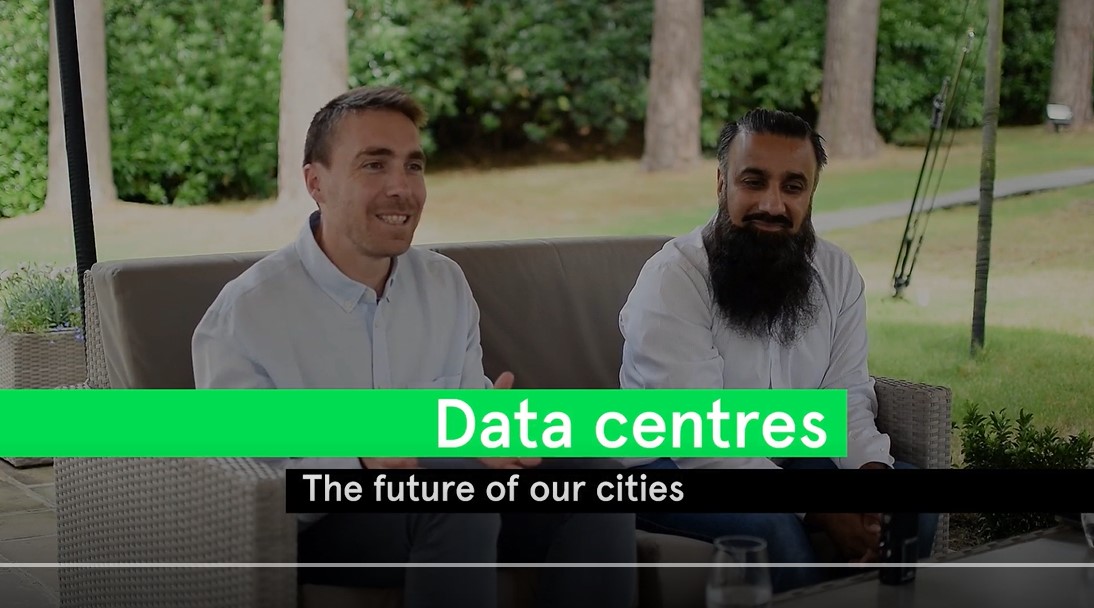Architects play an essential role in the development of data centres. Usually led by MEP engineers, with a strong emphasis on functionality, data centres are evolving, and architects will be needed more and more in this multidisciplinary sector. These structures are becoming an increasing part of our urban landscapes and clients often want to see their brand identities reflected in data centre designs.
We spoke to Hyphen architects, Matías Menichetti and Victoria Ruiz del Portal Urraca and architectural technologist Bill Cross to find out why architects should consider working on data centres.
New horizons
Primarily based in Chile, Hyphen’s director in Latin America, Matías Menichetti, explains, “I think that data centres are still an unknown industry for most architects, at least in Latin America. However, this type of building is becoming more and more a part of our urban landscape.
“We are beginning to see this type of building more around the city. As our digital life grows, they will be more and more obvious, closer to us, to our homes than ever before. So, these are critical buildings where functionality is the main objective. I see ourselves as architectural engineers and functionality is essential. Although DC buildings are led by MEP with the engineering aspect as the core objective, the architecture is also essential, fulfilling that functionality, in modulating the spaces and in achieving the best construction solutions for each country where DCs are to be deployed.
“We’re seeing more and more of these types of buildings and brands are differentiating themselves from their competitors through design. They’re projecting the brand through this. So, it’s definitely an interesting sector. It is an unknown sector for most architects, but a very interesting one to be a part of.
“We are working in a critical infrastructure with many specialised disciplines contributing to the finished project. And you can see how people of all these different disciplines collaborate to create a fantastic machine.”
“Working on data centres is also highly creative”, explains Victoria Ruiz del Portal Urraca, Senior Architect at Hyphen in Winchester in the UK. “You need to keep the functionality of the building and at the same time allow enough space for all the equipment required. Maintaining an accessible and clean layout is a creative challenge when so many systems need to fit within the same space.
“We need to make sure that there is space for every single item, comply with regulation and keep an efficient scheme.”
“They have also changed significantly”, Matías adds. “A few years back, data centres were considered to have simple designs. Now they’re getting more complicated as technology advances and as brands want more elaborate designs to differentiate themselves from competitors.”
Why work on DCs?
Matías continues, “I think it’s an industry where there are not that many key players involved in design, so my advice is to build your network, trust that network and collaborate. It’s a very collaborative industry and a very friendly industry and you will get to meet some of the brightest engineers in Latin America and some of the most interesting clients you will ever see as an architect.”
“I thought it would be a great opportunity to really understand the BIM process on real projects”, Victoria explains. “In these projects coordination is key. You will be using the latest modelling software and have the opportunity to contribute to a life model that will be used for the future maintenance of the building.
“You will work closely with a multidisciplinary team to develop an efficient building. The constant conversation with the engineer, the client and consultant partners to develop the best result is very interesting and rewarding.
“The projects are also varied – you leave gaining knowledge from other disciplines. Every day is a new challenge and an opportunity to learn new skills.”
Being good at BIM is really important for work on data centres. So, improve your BIM skills. This isn’t just about the software, as this is the environment these projects are set in. You will use BIM to collaborate with clients and consultant partners.
Bill Cross, Senior Architectural Technologist at Hyphen in Winchester says, “In certain practice, the advanced use of BIM software is the key to success and a capable user will be an important asset to data centre projects. Architectural students, for example, should take every opportunity to learn the software while at university.”


